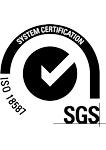Medical translation is considered to be one of the most difficult, given the wide range of areas and disciplines that medicine encompasses and the complexity and specificity of the terminology used in each of them.What’s more, an error in medical translation can have serious consequences as it can lead to misunderstandings or even medical errors.
For this reason, translation agencies are engaging more and more doctors with extensive experience in the translation industry or translators with specialized, specific training in medical translation, who are perfectly familiar with the terms and abbreviations used in the industry.
What is included in medical translation?
Among specialized translations in the medical industry, you can find different specialties such as: pharmacology, toxicology, radiology, hematology, genetics, cardiology, neurology, immunology, microbiology, pathology, urology, gynecology, oncology, and biotechnology, among others.
Some of the documents that may be translated in the field of medical translations are: internal medicine reports, clinical trials, specialized articles and books, glossaries, clinical protocols, medical histories and records, instructions for use of medical devices, prescriptions, drug information leaflets, analysis results, toxicology reports, medical certificates, etc. There are other aspects that must be taken into account in this type of translation, such as the rates and ongoing training that medical translators have to undergo.
Characteristics
The first thing is obtaining proper information. Regardless of the branch of medicine with which the text deal and the type of document in question, the tone should always be formal.
Medical translation in particular, and scientific translation in general, are often underestimated thanks to urban legends according to which vocabulary hardly changes between languages, and translation is hardly needed to understand medical texts in other languages. But what about the nuances or details – prepositions, for instance – that can change the meaning of a text? There are important in any text, but they can make all the difference in medical texts. Only a translator will be able to make the right decision and ensure the quality and clarity of the message.
Vocabulary is another aspect that should be carefully dealt with. We can often find ourselves translating a text about a part of the human body which we didn’t even know existed or about a bodily function which we were unfamiliar with. In this case you should make use of what, before the Internet age, we used to call parallel texts, which can be now easily found by means of an intelligent online search. You should also find what underlies behind words taken from so-called dead language, as we already explained in a previous post and look out for false friends, like the well-known Spanish constipado.
Measurement units become particularly important in medical translation, as accuracy is essential. The difference between one and two millilitres can be crucial in the results of a clinical analysis or a research project.
Useful resources for medical translations
If you want to become a medical translator we may have scared you a little with all the dificulties we have talked about. Nevertheless, that isn’t our intention at all, so we are going to show you three resources you might find useful:
PMC. US National Library of Medicine National Institutes of Health
Although Spanish is one of the most widely spoken languages in the world, English continues to be the language in which medical and health professionals prefer to publish their works, studies and discoveries. Most medical documents you’ll have to translate will have English as the source language and what’s more, texts written in other languages usually intersperse words written in the language spoken by Shakespeare. Thus, one of the first resources we can recommend based on our experience with Okomeds is an online journal specializing in health such as the PMC. In this online publication, you’ll find more than 3.5 million specialized articles that—naturally—include all the terminology you’ll need in your everyday work as a translator specializing in health sciences.
The New England Journal of Medicine
Another of the leading online medical publications used by the medical translators of Okomeds is the journal commonly know as “The New”. It’s a comprehensive and very up-to-date online journal where any good medical translator—expert or beginner—will find articles, opinions and debates that will help them build up and update their theoretical knowledge as well as master English medical terminology.
Norris Medical Library
USC – University of Southern California – is the “culprit” behind this excellent website. We learned of the Norris Medical Library as one of the translators of Okomeds had to give some talks at this prestigious American university. Subject guides, dictionaries, glossaries, links to other online resources, medical portals from different parts of the world, multimedia materials, etc. The Norris Medical Library is a complete web environment full of useful resources not only for translators specializing in medical topics, but also for students and medical professionals who want to stay informed of what’s going on in this highly interesting and critical professional sector.
A curious experiment
BMJ is a medical magazine that decided to try a little experiment. They took 10 sentences, used Google Translate to translate them into 26 languages (8 from Western Europe, 5 from Eastern Europe, 11 from Asia and 2 from Africa) and then asked professional translators (26 native speakers of the target languages) to translate the results back into English. The resulting translations were checked for errors.
Google’s efforts to act as a medical translator were not a great success. A cardiac arrest became an imprisoned heart. In the Marathi language, one of the most widely spoken languages in India, organ donation was translated as tools, and in Bengali, the need for mechanical ventilation became a wind movement.
Google got it right in only 57.7% of the cases examined! According to these results, if Google’s automatic translations were to be used in hospitals, fewer than half of the patients would receive the right care, adequate ventilation, donate their organs or give their consent for an operation.
Quality medical translation
A high-quality medical translation must adhere to ISO quality standards, such as the ISO 9001 and ISO 17100 standard. Compliance with this standard is a guarantee that a translation is 100% faithful to the original and that it is also of high quality, among other things. There are many benefits to engaging the services of a translation agency. A specialized translation agency will coordinate the entire medical translation workflow and will also select the most qualified medical translator to complete the assignment. The objective? Delivering a high-quality translation by the deadline agreed upon with the client.
Useful resources
If you want to have a good laugh, clic here to see some errors of medical translations.
In the other hand, if you want to know more in depth a medical translator, clic here to read a very interesting interview.













